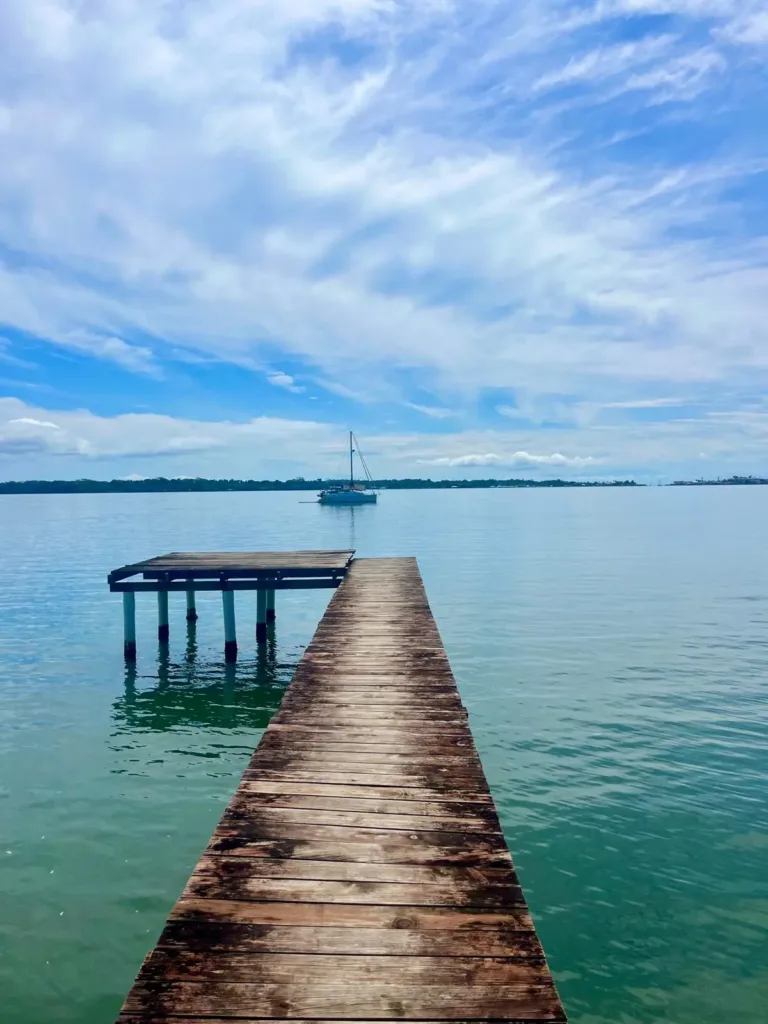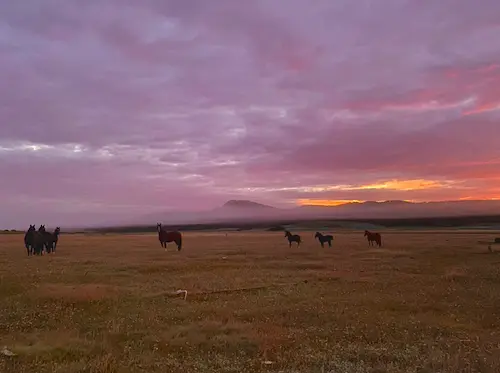On the Road Again
It’s been a little over a month since my peers and I left the U.S. to travel to Bhutan, and with interesting classes, the occasional bonfire, and almost daily ping pong tournaments, all of us have adjusted pretty well to life at the center. Though we’ve only been here a month, it already feels like we’ve done so much. We’ve set camera traps on the sides of post-forest fire mountains and interviewed monks at a Buddhist college in Paro. We’ve stood in the shadow of the massive Buddha Dorenma, and attended His Majesty’s birthday celebration in the capital city, Thimphu. In early February, we toured fisheries and Sunday marketplaces in the agricultural valley, Haa (you can see Bridger’s blog post about that here. And most recently, the fifteen of us and the rest of the SFS faculty and staff packed onto our coaster for a trip to the subtropical valley, Punakha, and the alpine wetland, Phobjikha.
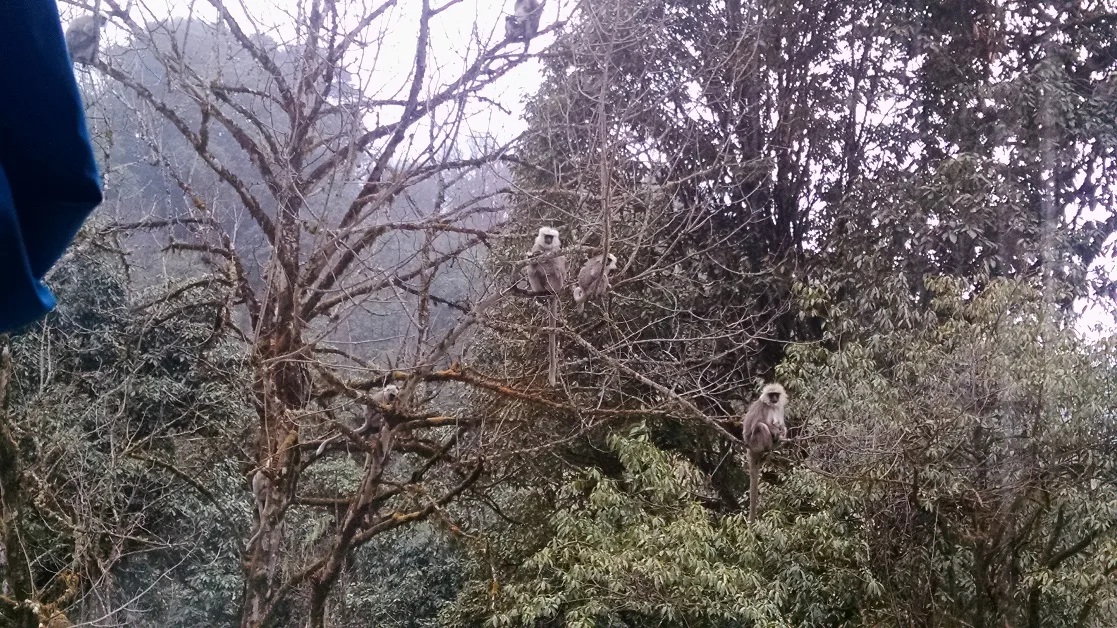
Punakha was first on the list and took most of the day to drive to from Paro. I’m constantly surprised though by the vast diversity of ecosystems and climates throughout so small a country. While our home valley Paro is cool and dry, driving into Punakha was like driving into summer. The temperature was substantially warmer, and where Paro had been dry and brown, Punakha was lush and green.
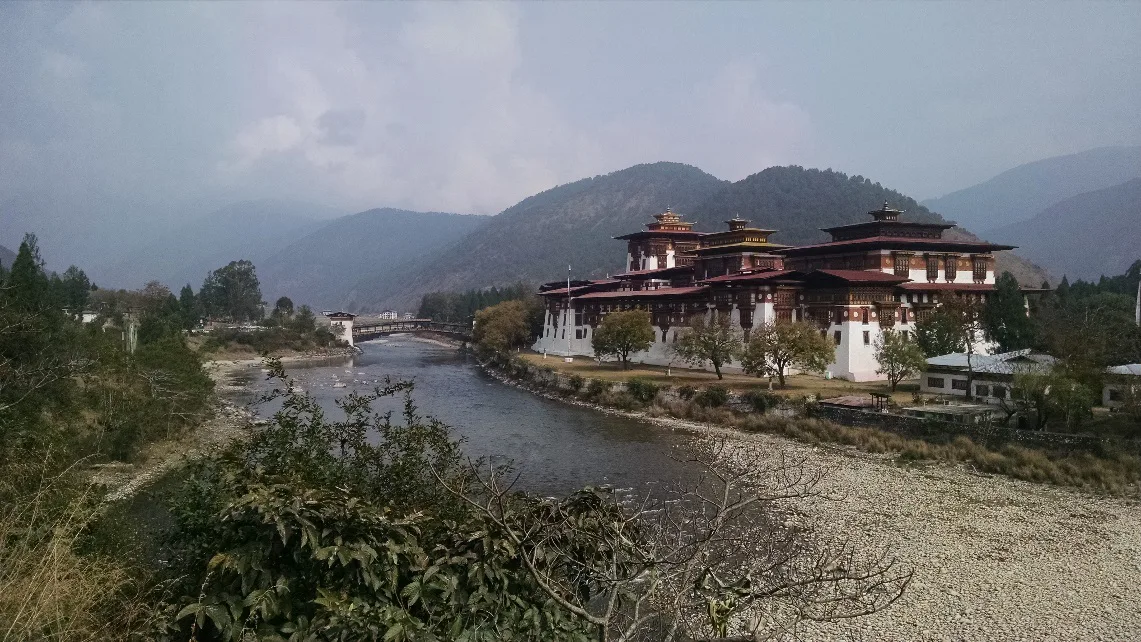
On our first day in Punakha, several of us donned our ghos and kiras to attend the Punakha tsechu, or festival. The tsechu took place in the beautiful Punakha dzong, what had previously been the summer palace of Bhutan’s unifier, Zhabdrung Ngawang Namgyal. The structure was massive, beautifully intricate, and completely packed with people as we jostled our way through the crowds to find a spot to watch the performances. A masked figure, representing Zhabdrung, oversaw the proceedings, and multiple dancers and performers followed after. This included mock battles representing the Bhutanese-Tibetan War with masked dancers moving in between the warriors, dancing men and women in traditional dress, and a collection of drummers in elaborate costumes. It was an incredible performance, and not one I’ll soon forget.
After the seychu, we made our way to Phobjikha, and again, the change in climate was noticeable. The ecosystem was similar to Paro, with predominately blue pines and other evergreens, but the temperature was slightly colder, and all of us definitely bundled up more as we departed the coaster to follow our host families up to our homestays.

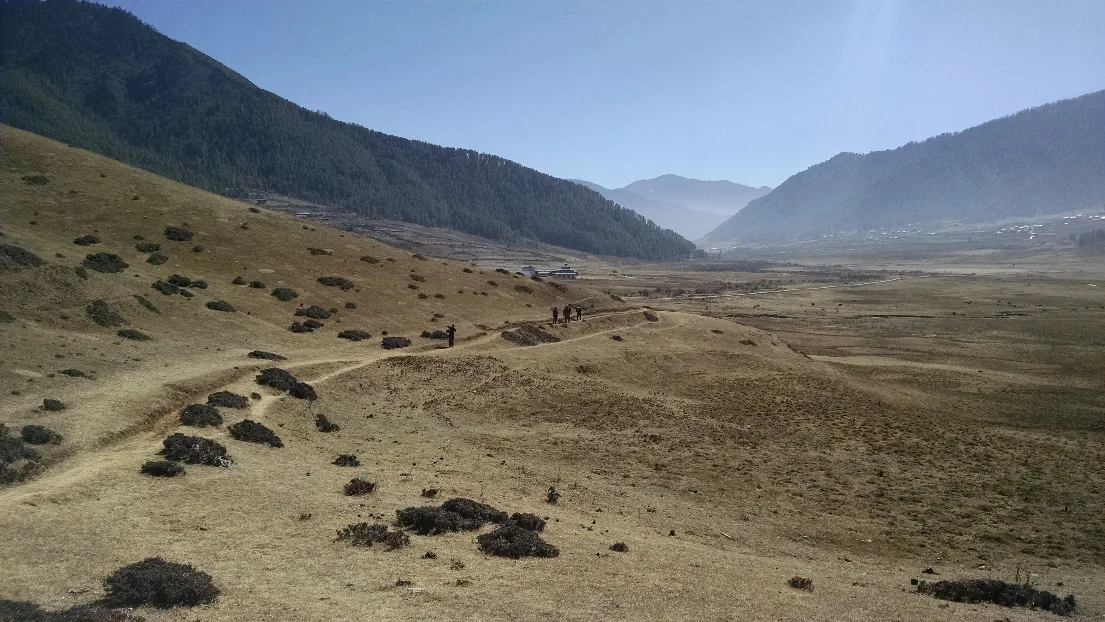
We spent several days in Phobjikha, learning about the local deities, going on hikes across the mountainside, paying our respects at multiple temples, and visiting the center for Black-Necked Cranes, which migrate yearly to the valley for the winter before returning to their summer habitat on the Tibetan Plateau. We also did a quick lesson on behavioral ecology with the Black-Necked Cranes, and for a moment, it almost felt like I was out on the Great Plains – crawling over grassy hills on my stomach, binoculars in hand, trying to understand more about the cranes’ group and feeding behaviors.
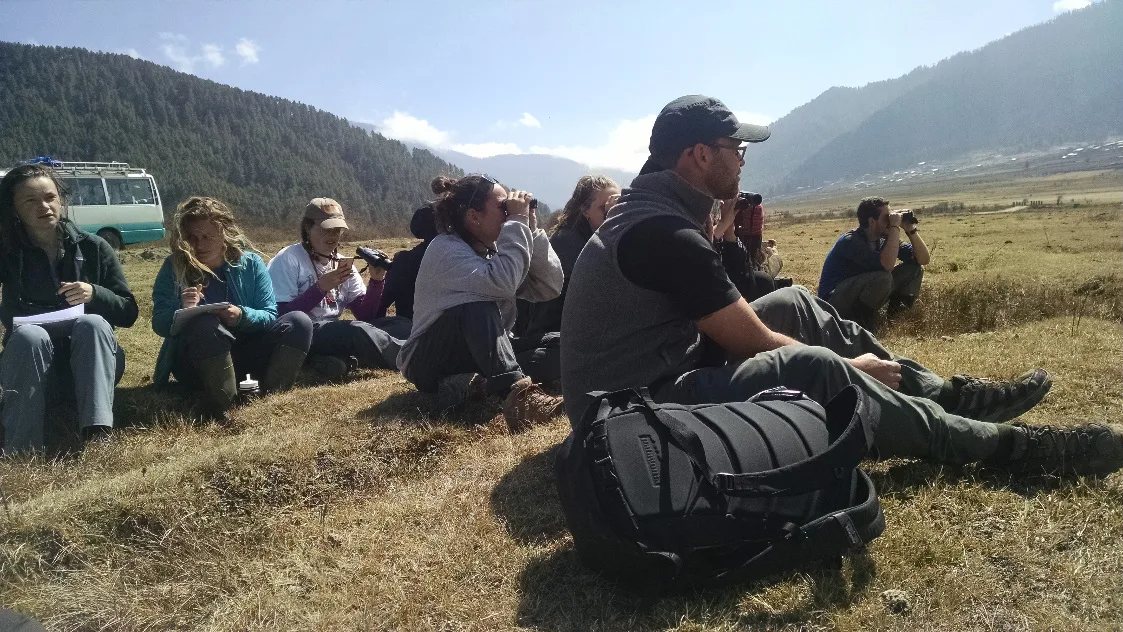
After a few days in Phobjikha, we returned to the lovely subtropical Punakha, where we learned about Bhutan’s agricultural system and the country’s investment in hydropower. We also got a chance to camp for the night beside a beautiful river and misty mountainside. For me, it was definitely a nice change of pace, and as an ex-camp counselor, being back in the woods, eating and telling stories around a campfire with my peers felt a little nostalgic. I’m not sure how my peers felt about sleeping in tents, but the one night excursion has definitely gotten me excited for the multi-day trek later in the semester.
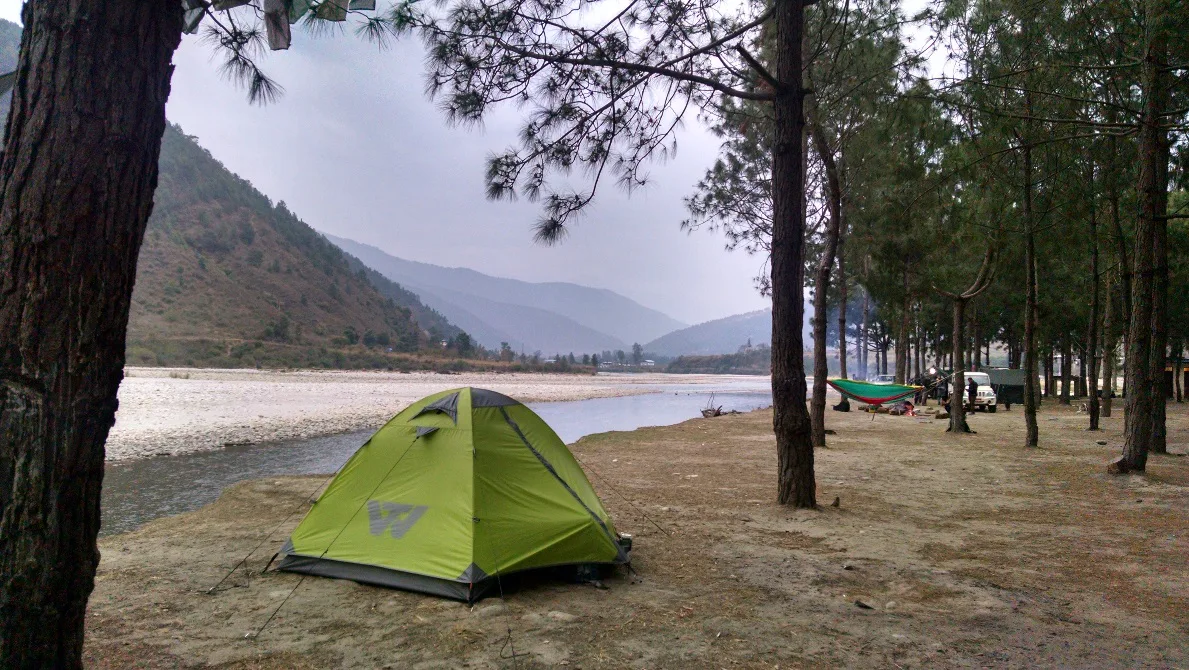
Our trip finished back in Thimphu with tours of a textile museum and a traditional medicine hospital, as well as some pretty incredible guest lectures and meetings, including Karma Phuntsho, the author of one of our textbooks, The History of Bhutan, the Chief Justice of Bhutan’s Supreme Court, and even a chance meeting with a reincarnate of Guru Rinpoche, the spiritual leader who brought Buddhism to Bhutan, on the path up to Tango Monastery.
Combined, this trip has really made me grateful to be where I am. As my classmate Sam mentioned in her reflection this morning, to have these experiences, to see so much of the country and meet all of these remarkable people, especially as undergraduates, is something truly incredible. I’m looking forward to what the rest of the semester holds, and I hope as I continue to explore what Bhutan has to offer, I never lose that sense of gratitude or awe. I have a feeling despite how packed our weeks are, this semester is going to go fast.
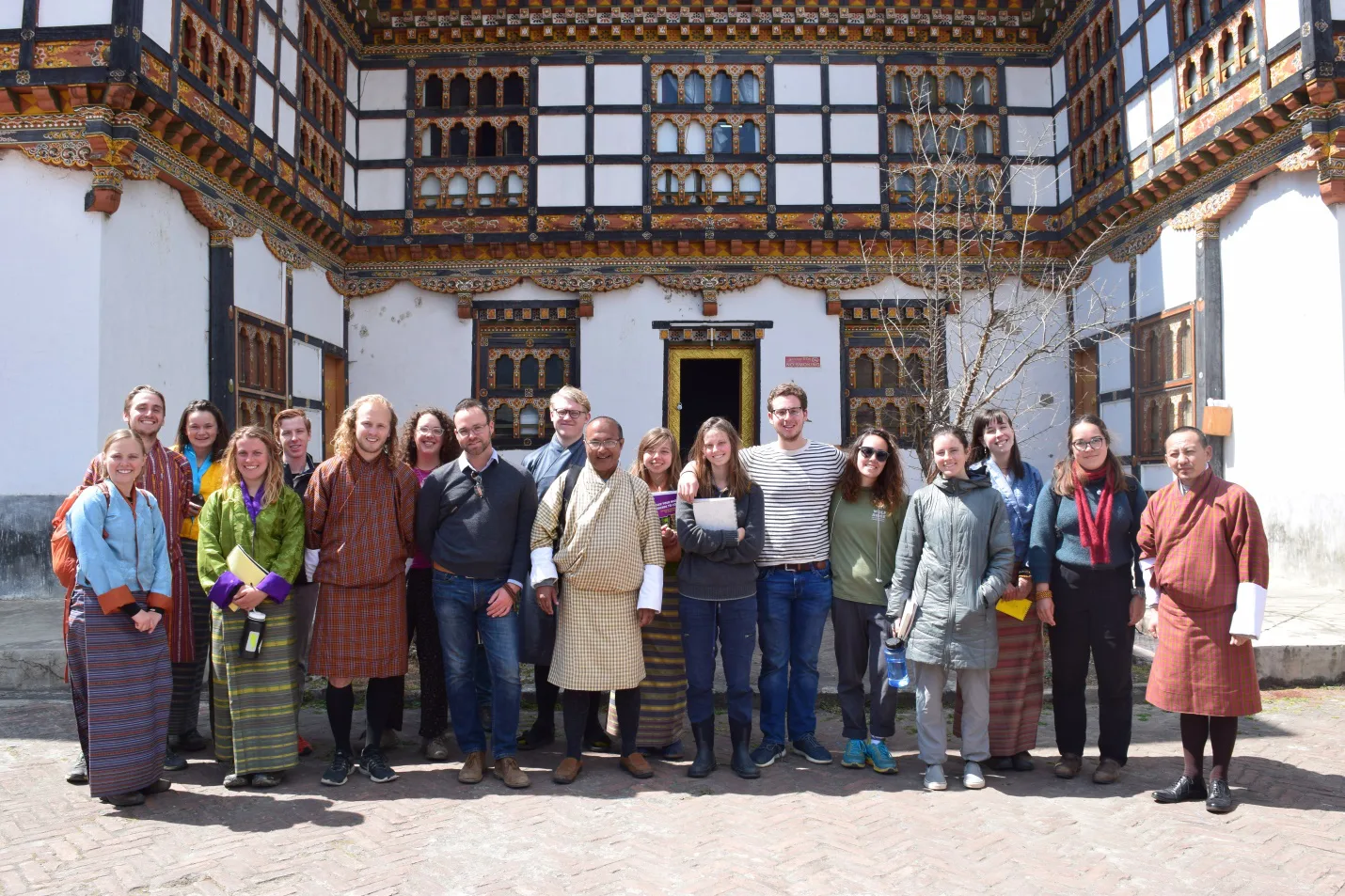
Photo courtesy of Greg Francois
Related Posts

Camila Rojas: Alumni Spotlight⭐
